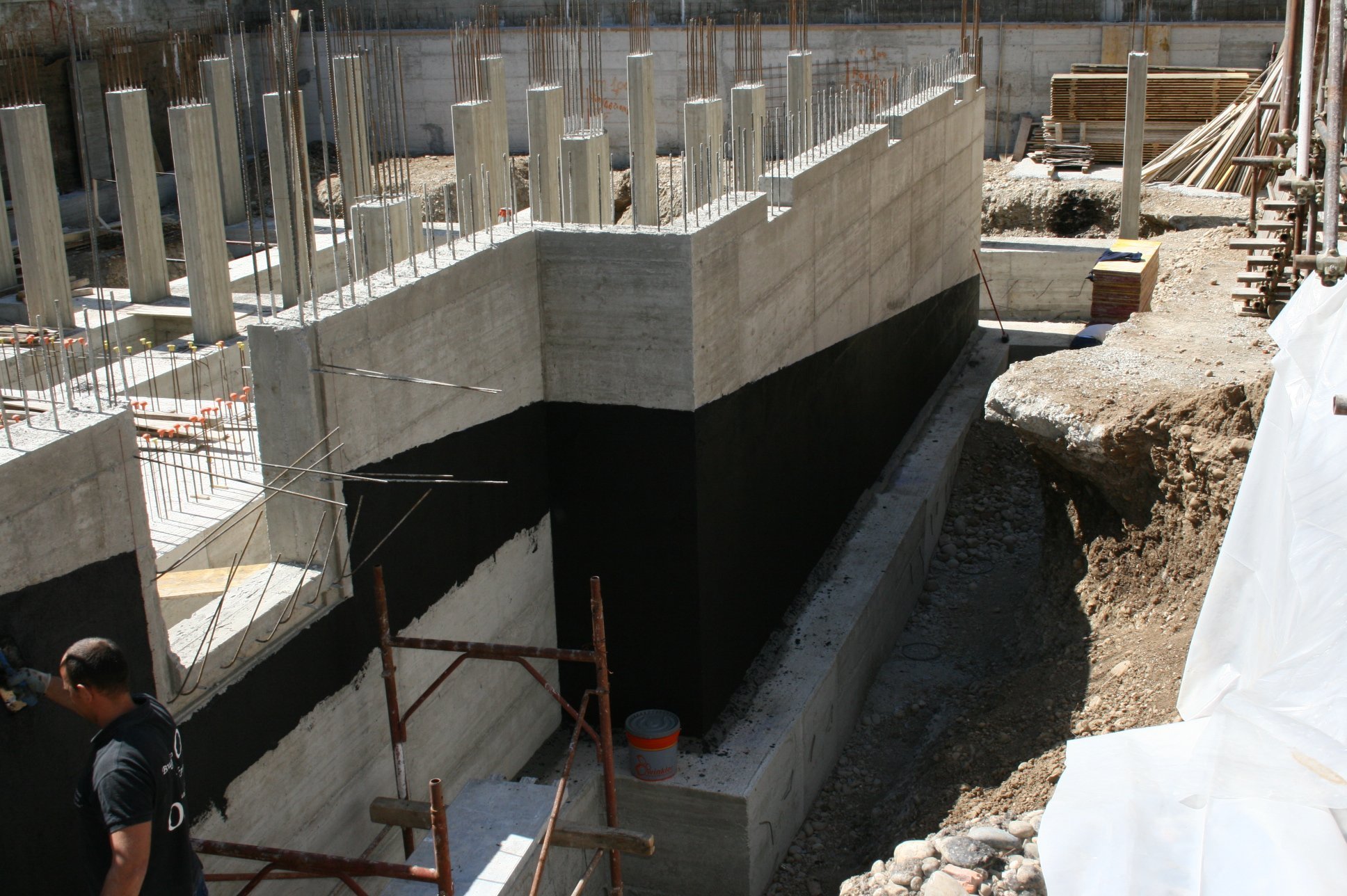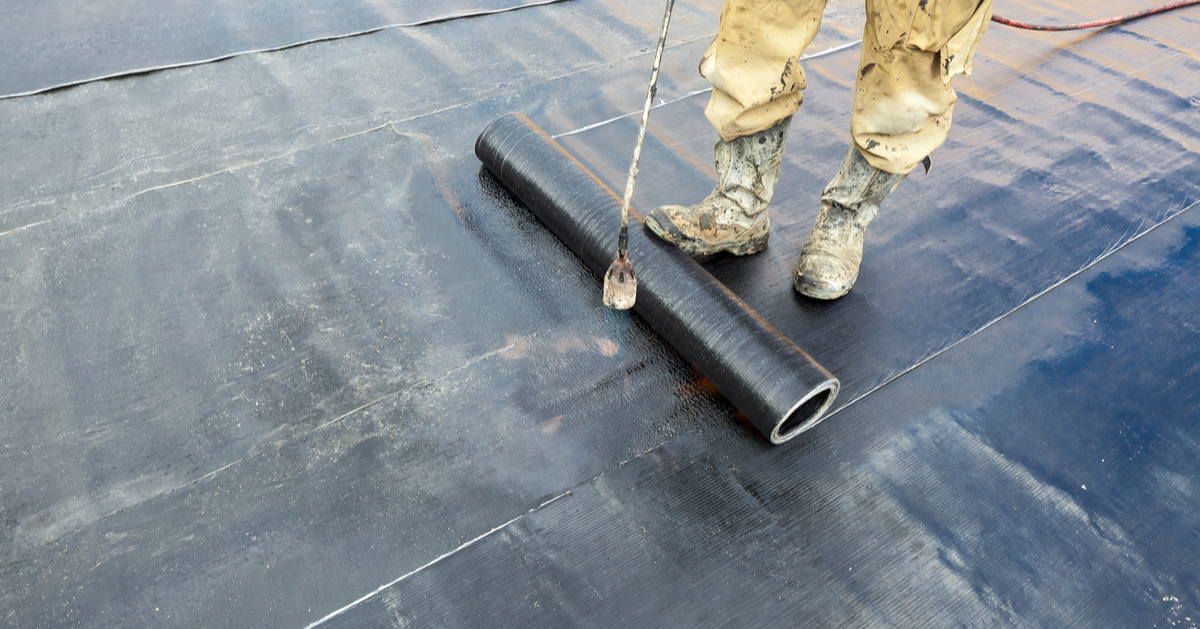How Yard drainage Omaha Can Eliminate Standing Water
Wiki Article
Just How Waterproofing Works: A Detailed Check Out Strategies and Technologies
Waterproofing is necessary for protecting frameworks from moisture-related damages. It involves different methods and innovations that produce barriers versus water invasion. Conventional techniques, such as compacted clay, exist together with modern-day technologies like liquid-applied membrane layers. Comprehending the subtleties of these strategies is essential for effective application. However, the efficiency of any type of waterproofing option hinges not just on the methods utilized however also on recurring maintenance and assessment. What are the essential variables that affect lasting efficiency?Recognizing the Fundamentals of Waterproofing
Waterproofing is an essential process that protects structures from water breach, which can result in substantial damages over time. This approach involves the application of numerous products and methods created to create a barrier against moisture. The key objective is to avoid water from penetrating surfaces, which can trigger degeneration, mold and mildew growth, and architectural instability.Various elements influence the selection of waterproofing technique, consisting of the kind of framework, its location, and ecological problems. Understanding the physics of water motion and the buildings of various products is important in picking a reliable waterproofing solution.Effective waterproofing not just safeguards structures however also enhances their long life and honesty. Normally, it is incorporated into the design phase of building to ensure comprehensive security. As recognition of water-related issues grows, the relevance of recognizing waterproofing fundamentals ends up being significantly clear to designers, contractors, and homeowner alike.Typical Waterproofing Approaches
Conventional waterproofing techniques have been used for centuries, depending on tried and true methods and products to secure structures from water damage. Among the oldest methods involves making use of clay, which, when compressed, produces a natural barrier versus dampness. In addition, asphalt, a sticky, black product stemmed from oil, has been utilized for its water-resistant homes, commonly related to roofs and foundations.Another technique includes the application of lime-based plasters, which give a breathable layer that allows wetness to escape while protecting against water access. Thatch roof covering, a standard approach still seen in some cultures, provides exceptional waterproofing because of its snugly packed straw layers.Moreover, the usage of stone and block has actually projected, as these products are naturally resistant to water when correctly mounted. In general, typical waterproofing techniques highlight the importance of choosing suitable products and building and construction techniques to boost resilience against water intrusion.Modern Waterproofing Technologies
Developments in modern waterproofing technologies have reinvented the method frameworks are secured from water damages. Innovative strategies such as liquid-applied membrane layers and advanced sealers have actually enhanced the performance and convenience of waterproofing remedies. These technologies enable seamless application, lowering the risk of leaks and making certain thorough coverage over complicated surfaces.Moreover, the integration of smart innovations, such as wetness sensing units and automated monitoring systems, makes it possible for real-time analysis of waterproofing efficiency. This positive strategy promotes prompt upkeep and lowers long-lasting repair work costs.Additionally, developments in spray-applied finishes use fast application and outstanding attachment, adjusting to different substratums while giving robust security. Methods like polymer-modified systems even more enhance flexibility and resilience, making them suitable for diverse settings. In general, modern waterproofing innovations not just reduce water intrusion yet additionally add to the long life and sustainability of frameworks, noting a significant change in the market.Materials Made Use Of in Waterproofing
The effectiveness of waterproofing remedies greatly relies upon the products made use of in their application. Various products are utilized to create obstacles against water ingress, each with distinct buildings fit for different environments. Generally utilized materials consist of membranes, coverings, and sealants.Liquid-applied membrane layers, commonly made from polyurethane or acrylic, develop a smooth barrier that adjusts to intricate surfaces. Sheet membranes, commonly created from rubber or thermoplastic, deal sturdiness and are suitable for larger locations. In addition, cementitious waterproofing materials, made up of cementitious compounds, offer superb bond and flexibility.Sealants made from silicone or polyurethane are crucial for joints and seams, guaranteeing thorough protection. Sophisticated materials, such as geo-composite membrane layers, incorporate several functions, enhancing efficiency. Generally, the option of waterproofing materials is vital in attaining resilient and efficient water resistance, customized to details task requirements and ecological problems.
Common Applications of Waterproofing
Waterproofing plays a vital function in numerous markets, ensuring the durability and integrity of structures. Usual applications consist of property services that safeguard homes, commercial facilities that safeguards companies, and commercial settings that call for durable security against wetness. Comprehending these applications highlights the importance of waterproofing in keeping both safety and performance across different environments.Residential Waterproofing Solutions
Numerous home owners face difficulties with moisture intrusion, making effective property waterproofing options vital. Numerous approaches exist to resolve this problem, including exterior and interior waterproofing systems. Inside options typically involve the application of sealers and finishings to cellar wall surfaces, which aid prevent water infiltration. Exterior approaches generally include the installment of drain systems and waterproof membranes that divert water far from the foundation.Additionally, property owners may take into consideration sump pumps to eliminate water buildup and dehumidifiers to regulate humidity degrees. Appropriate grading and making use of gutters additionally play an important duty in managing water flow around the home. By applying these approaches, house owners can greatly lower the danger of water damage and mold and mildew growth, ensuring a completely dry and risk-free living environment.
Commercial Framework Defense
Effective waterproofing solutions play a vital role in the security of next page industrial framework. Yard drainage official source Omaha. These techniques are important for protecting structures, parking frameworks, and bridges from water damage, which can jeopardize architectural integrity and result in costly fixings. Usual applications include the installation of membranes, finishings, and sealers that develop obstacles against dampness infiltration. Locations such as basements, roofings, and outside walls are usually focused on to guarantee long life and toughness. Furthermore, waterproofing systems can enhance power efficiency by preventing water-related problems that might bring about mold development and degeneration. By executing robust waterproofing actions, homeowner can safeguard their investments and maintain functional performance, eventually adding to the total sustainability of commercial centersIndustrial Applications Review
While various markets encounter special obstacles, the demand for trustworthy waterproofing remedies stays a continuous in industrial applications. Industries such as production, construction, and power typically run into environments where moisture exposure can jeopardize structural stability and functional performance. In producing facilities, waterproofing is essential for safeguarding machinery and materials from water damages. In construction, it safeguards foundations and basements against groundwater infiltration. The power field depends on waterproofing for the security of tools in hydroelectric plants and overseas structures. Additionally, food processing markets utilize waterproofing to ensure health and compliance with security standards. On the whole, reliable waterproofing options are crucial for boosting toughness, security, and performance throughout different commercial settings.
Upkeep and Long Life of Waterproofing Solutions
Waterproofing remedies are designed to offer lasting security versus dampness breach, routine maintenance is crucial to assure their performance and long life. Regular examinations play a substantial function in identifying potential concerns such as splits, peeling off, or signs of water damage. Addressing these problems quickly can stop further deterioration and costly repairs.Additionally, cleaning up the surface of waterproofed areas assists eliminate dust and debris that might endanger the honesty of the waterproofing obstacle. It's additionally a good idea to reapply safety finishes or sealants as recommended by suppliers to preserve excellent efficiency. Ecological aspects, such as UV direct exposure and severe climate problems, can affect the life expectancy of waterproofing materials, making routine analysis vitalFrequently Asked Questions
Can Waterproofing Be Applied in Winter?
The inquiry of applying waterproofing in cold like this climate raises problems about attachment and curing. Several products may not execute at their finest in low temperature levels, requiring careful choice and factor to consider of details guidelines for efficient application.How Much Time Does Waterproofing Commonly Last?
The period of waterproofing effectiveness varies based upon materials and environmental aspects. Normally, it can last from five to 10 years, yet regular upkeep and examinations are important to guarantee peak performance and durability.Is Do It Yourself Waterproofing Effective and Safe?
The effectiveness and safety of DIY waterproofing depend on numerous factors, consisting of material top quality and application strategy. While some people achieve sufficient results, others may experience issues that jeopardize long-term defense and structural stability.What Are the Indicators of Failing Waterproofing?
Indications of stopping working waterproofing consist of noticeable water stains, peeling paint, mold development, mildewy odors, and dampness in wall surfaces or ceilings - Water Solutions Omaha. These indications recommend compromised barriers, demanding timely evaluation and possible remediation to prevent more damageJust how Do I Choose the Right Waterproofing Service Provider?

Report this wiki page